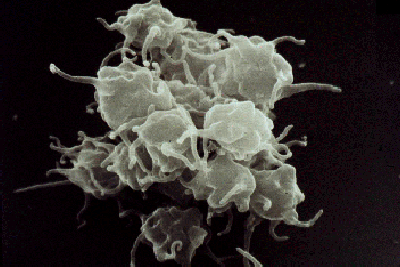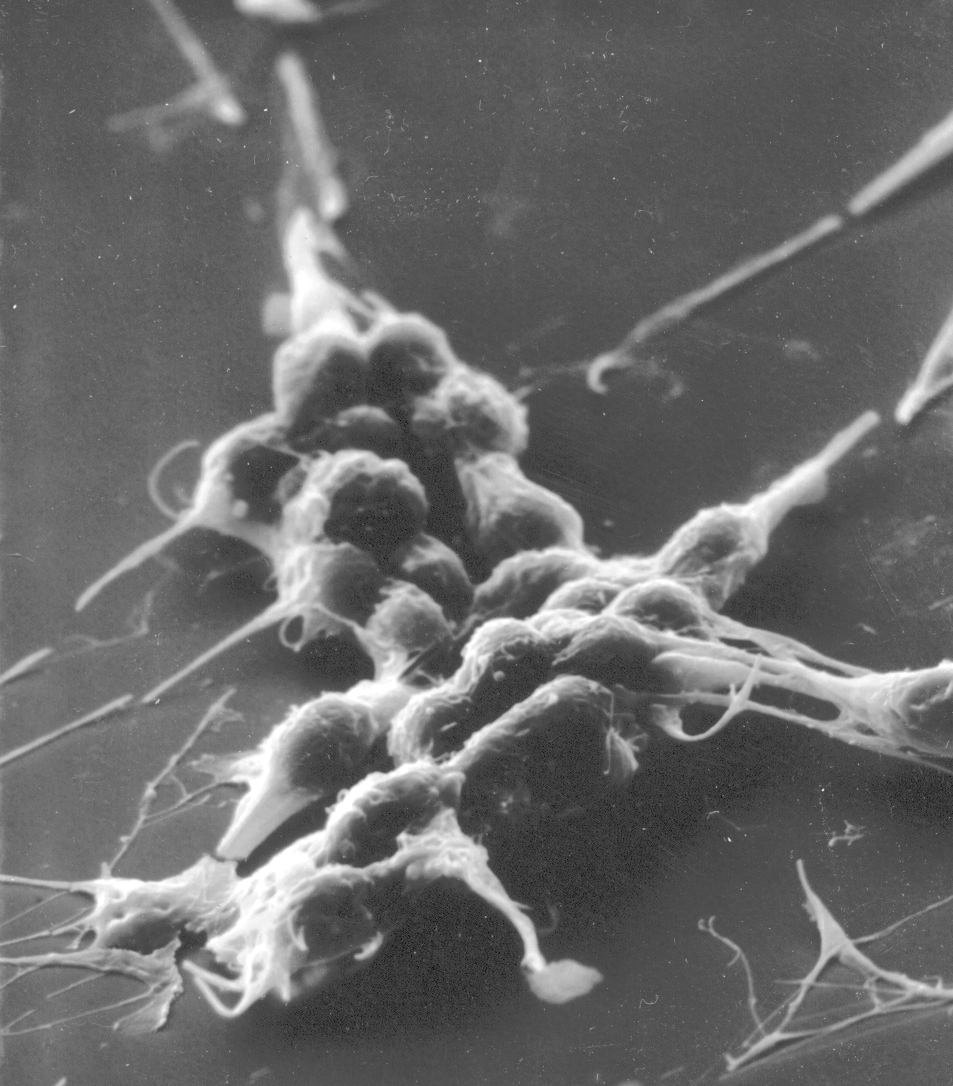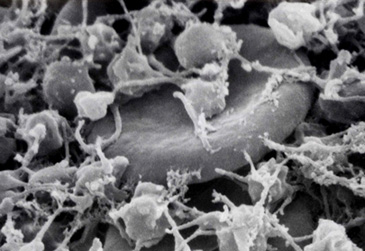TTP Publications
1. These articles describe The Oklahoma TTP Registry:
George JN: The Tibor Greenwalt Award Lecture. The Oklahoma Thrombotic Thrombocytopenic Purpura-Hemolytic Uremic Syndrome Registry: a program for patient care, education, and research. Transfusion 44: 1384-1392, 2004. [Full Text]
George JN, Kremer Hovinga JA, Terrell DR, Vesely SK, Lammle B: The Oklahoma Thrombotic Thrombocytopenic Purpura-Hemolytic Uremic Syndrome Registry: the Swiss connection. European J Haematol 80: 277-286, 2008. [Full Text]
George JN, Vesely SK, Terrell DR, Deford CC, Reese JA, Al-Nouri ZL, Stewart LM, Lu KH, Muthurajah D. The Oklahoma thrombotic thrombocytopenic purpura-hemolytic uremic syndrome registry: a model for clinical research, education, and patient care. Haemostaseologie 2013; 33 (2) 105-112. [Abstract]
Kremer Hovinga JA, Vesely SK, Terrell DR, Lämmle B, George JN: Survival and relapse in patients with thrombotic thrombocytopenic purpura. Blood 115: 1500-1511, 2010. [Full Text]
2. These articles describe the patient support group organized by The Oklahoma TTP-HUS Registry. This group has met 2-3 times every year since 1996. Its continuing success documents its benefit for our patients.
Howard MA, Duvall D, Terrell DR, Christopher A, Thomas I, Holloway N, Vesely SK, George JN: A support group for patients who have recovered from thrombotic thrombocytopenic purpura-hemolytic uremic syndrome: the six year experience of the Oklahoma TTP-HUS Study Group. J Clin Apheresis 18: 16-20, 2003. [Full Text]
Ambadwar P, Duvall D, Wolf NJ, Terrell DR, Vesely SK, George JN: Support groups for patients who have recovered from thrombotic thrombocytopenic purpura. J Clin Apheresis 23: 168-169, 2008. [Full Text]
3. These articles describe the incidence of TTP-HUS in Oklahoma, standardized for the US population. There are multiple gender and race disparities among the different clinical categories of TTP-HUS.
Reese JA, Muthurajah D, Kremer Hovinga JA, Terrell DR, Vesely SK, George JN. Children and adults with thrombotic thrombocytopenic purpura associated with severe, acquired ADAMTS13 deficiency: comparison of incidence, demographic and clinical features. Pediatric Blood & Cancer 2013; 60 (10): 1676-1682. [Full Text]
Terrell DR, Motto DG, Vesely SK, Kremer Hovinga JA, Lämmle B, George JN. Blood group O and black race are independent risk factors for thrombotic thrombocytopenic purpura associated with severe ADAMTS13 deficiency. Transfusion 2011 (10); 51: 2237-43. [Full Text]
Terrell DR, Vesely SK, Kremer Hovinga JA, Lämmle B, George JN: Distinct disparities of gender and race among the thrombotic thrombocytopenic purpura and hemolytic-uremic syndromes. Am J Hematol 85(11): 844-847, 2010. [Full Text]
4. A summary of current understanding and treatment of TTP
George JN: Thrombotic thrombocytopenic purpura. New Eng J Med 354: 1927-1935, 2006. [Full Text]
George JN: How I treat patients with thrombotic thrombocytopenic purpura: 2010. Blood 116(20): 4060-4069, 2010. [Full Text]
George JN, Vesely SK. A seasonal association of incident cases of thrombotic thrombocytopenia purpura was not observed in the Oklahoma TTP-HUS Registry. Transfusion 2012; 52: 1593-1594. [Full Text]
George JN, Chen Q, Deford CC, Al-Nouri, ZL. Ten patient stories illustrating the extraordinarily diverse clinical features of patients with thrombotic thrombocytopenic purpura and severe ADAMTS13 deficiency. J Clin Apheresis 27: 302-311, 2012. [Full Text]
5. Although plasma exchange is essential treatment for patients with TTP, the risk for serious complication is great.
Rizvi MA, Vesely SK, George JN, Chandler L, Duvall D, Smith JN, Gilcher RO: Plasma exchange complications in 71 consecutive patients treated for clinically suspected thrombotic thrombocytopenic purpura-hemolytic uremic syndrome. Transfusion 40:896-901, 2000. [Full Text]
Som S, Deford CC, Kaiser ML, Terrell, DR, Kremer Hovinga JA, Lämmle B, George JN, Vesely SK. Decreasing frequency of plasma exchange complications in patients treated for thrombotic thrombocytopenic purpura-hemolytic uremic syndrome, 1996-2011. [CME article] Transfusion 52 (12): 2525-2532, 2012. [Full Text]
McClain RS, Terrell DR, Vesely SK, George JN. Plasma exchange complications in patients treated for thrombotic thrombocytopenic purpura-hemolytic uremic syndrome: 2011-2014. Transfusion 2014; 52 (12): 3257-3259. [Full Text]
6. A complication of plasma exchange treatment for TTP that is often unrecognized is platelet loss caused by removal of platelets by the apheresis instrument.
Perdue JJ, Chandler LK, Vesely SK, Duvall DS, Gilcher RO, Smith JW, George JN: Unintentional platelet removal by plasmapheresis. J Clin Apheresis 16: 55-60, 2001. [Full Text]
7. Pregnancy is a risk factor for provoking acute episodes of TTP. Most patients with TTP are women, and in many women TTP occurs during pregnancy. The period of greater risk appears to be near delivery or soon after delivery. Although there is a risk that pregnancy may provoke a recurrence of TTP, most pregnancies following recovery from TTP are uncomplicated. TTP is difficult to distinguish from the more common complications of pregnancy, such as preeclampsia.
Jiang Y, McIntosh JJ, Reese JA, Deford CC, Kremer Hovinga JA, Lämmle B, Terrell DR, Vesely SK, Knudtson EJ, George JN. Pregnancy outcomes following recovery from acquired thrombotic thrombocytopenic purpura. Blood 123 (11): 1674-1680, 2014. [Full Text]
McMinn JR, George JN: Evaluation of women with clinically suspected thrombotic thrombocytopenic purpura-hemolytic uremic syndrome during pregnancy. J Clnical Apheresis 16: 202-209, 2001. [Full Text]
8. Widespread cancer can mimic all of the signs of TTP-HUS.
Francis KK, Kojouri K, George JN: Occult systemic carcinoma masquerading as thrombotic thrombocytopenic purpura-hemolytic uremic syndrome. Community Oncology 2: 339-343, 2005. [Full Text]
Francis KK, Kalyanam N, Terrell DR, Vesely SK, George JN. Disseminated malignancy misdiagnosed as thrombotic thrombocytopenic purpura: A report of 10 patients and a systematic review of published cases. The Oncologist 12: 11-19, 2007 [Full Text]
George JN. Systemic malignancies as a cause of unexpected microangiopathic hemolytic anemia and thrombocytopenia. Oncology 2011; 25; 908-914. [Full Text]
9. Quinine is the most common cause of drug-induced TTP. Quinine can also cause many other problems, such as liver toxicity, that can make the diagnosis difficult. The severity of quinine-induced TTP and the difficult diagnosis are emphasized in “Melissa’s Story.”
Kojouri K, Vesely SK, George JN: Quinine-associated thrombotic thrombocytopenic purpura-hemolytic uremic syndrome: frequency, clinical features, and long-term outcomes. Ann Int Med 135: 1047-1051. [Full Text]
Al-Nouri ZL, Reese JA, Terrell DR, Vesely SK, George JN. Drug-induced thrombotic microangiopathy: a systematic review of published case reports. Blood 2015; 125 (4): 616-618. [Full Text]
10. Drugs that suppress the immune system, such as steroids and rituximab, may be effective treatment for TTP, in addition to plasma exchange.
Lim WP, Vesely SK, George JN. The role of rituximab in the management of patients with thrombotic thrombocytopenic purpura. Blood 2015; 125 (10): 1526-1531. [Full Text]
11. For many years platelet transfusions have been thought to be harmful for patients with TTP. However a systematic review of all publications revealed that this dogma was based only on very few anecdotes. But these anecdotes are dramatic and persuasive, and they are consistent with the pathogenesis of platelet thrombi in patients with TTP. Our experience is that most patients with TTP receive platelet transfusions before the diagnosis of TTP is considered, and we could document no harm from platelet transfusions. Therefore we recommend that platelet transfusions are appropriate for patients with TTP who have appropriate indications, such as active hemorrhage or requirement for a surgical procedure.
Swisher KK, Terrell DR, Vesely SK, Kremer Hovinga JA, Lämmle B, George JN: Clinical outcomes after platelet transfusions in patients with thrombotic thrombocytopenic purpura. Transfusion 49: 873-887, 2009. [Full Text]
12. As we continue to follow our patients, we have recognized that some patients are not the same after recovering from their acute episode of TTP-HUS. They have difficulties with memory, concentration, and endurance. These problems were first recognized from patient conversations at our support group meetings. We have documented abnormalities of health-related quality-of-life and cognitive ability in our patients that persist for years following recovery.
Lewis QF, Lanneau MS, Mathias SD, Terrell DR, Vesely SK, George JN: Long-term deficits in health-related quality-of-life following recovery from thrombotic thrombocytopenic purpura. Transfusion 49: 118-124, 2009. [Full Text]
Kennedy KA, Lewis QF, Scott J, Kremer Hovinga JA, Lämmle B, Terrell DR, Vesely SK, George JN: Neurocognitive deficits after recovery from thrombotic thrombocytopenic purpura. Transfusion 49: 1092-1101, 2009. [Full Text]
Deford CC, Reese JA, Schwartz LH, Perdue JJ, Kremer Hovinga JA, Lämmle B, Terrell DR, Vesely SK, George JN. Multiple major morbidities and increased mortality during long-term follow-up after recovery from thrombotic thrombocytopenic purpura. Blood 2013; 122 (12): 2023-2029. [Full Text]
IMPORTANT!
The information included in this website is for educational purposes only. The designers and operators of this site take no responsibility for the things you may do with this information. For advice on your unique medical condition, please consult your health care professional. By going further into this website you acknowledge that you have read and understood this disclaimer.



